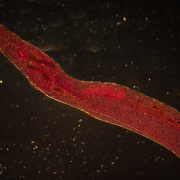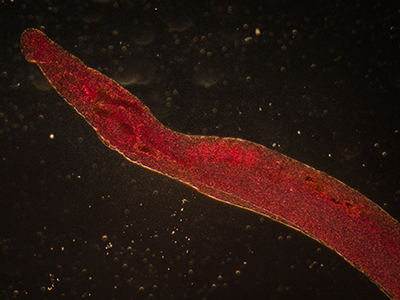Gene-targeting may help prevent or recover neonatal brain injuries

The findings of a new pre-clinical study published in The Journal of Neuroscience are helping pave the way toward better understanding, prevention and recovery of neonatal brain injuries.
The findings of a new pre-clinical study published in The Journal of Neuroscience are helping pave the way toward better understanding, prevention and recovery of neonatal brain injuries. During pregnancy, the fetus normally grows in low oxygen conditions. When babies are born preterm, there is an abrupt change into a high oxygen environment which may be higher than the baby can tolerate. These preterm babies often need support to breathe because their lungs are immature. If the oxygen they receive is too high, oxygen-free radicals can form and cause cell death.
Premature infants have underdeveloped antioxidant defenses that prevent or delay some types of cell damage under normal conditions. In a high oxygen environment, these underdeveloped defenses cannot fully protect against oxidative stress, damaging different brain regions without available treatments or preventative measures.
“I am thrilled that we identified a defect in a specific cell population in the hippocampus for memory development,” said Vittorio Gallo, Ph.D., interim chief academic officer and interim director of the Children’s National Research Institute, and principal investigator for the District of Columbia Intellectual and Developmental Disabilities Research Center. “I did not think we would be able to do it at a refined level, identifying cell populations sensitive to oxidative stress and its underlying signaling pathway and molecular mechanism.”

“I am thrilled that we identified a defect in a specific cell population in the hippocampus for memory development,” said Vittorio Gallo, Ph.D.
Children’s National Hospital experts found that oxidative stress over-activates a glucose metabolism enzyme, GSK3β, altering hippocampal interneuron development and impairing learning and memory, according to the pre-clinical study. The researchers also inhibited GSK3β in hippocampal interneurons, reversing these cellular and cognitive deficits.
The role of oxidative stress in the developing hippocampus, as well as GSK3β involvement in oxidative stress-induced neurodevelopmental disorders and cognitive deficits, have both been unexplored until now. Goldstein et al. suggest the study paves the way for the field as a viable approach to maximize functional recovery after neonatal brain injury.
To better understand the mechanisms underlying neonatal brain injury, the researchers mimicked the brain injury by inducing high oxygen levels in a pre-clinical model for a short time. This quest led to unlocking the underpinnings of the cognitive deficits, including the pathophysiology and molecular mechanisms of oxidative damage in the developing hippocampus.
Once they identified what caused cellular damage, the researchers used a gene-targeted approach to reduce GSK3β levels in POMC-expressing cells or Gad2-expressing interneurons. By regulating the levels of GSK3β in interneurons — but not in POMC-expressing cells — inhibitory neurotransmission was significantly improved and memory deficits due to high oxygen levels were reversed.







